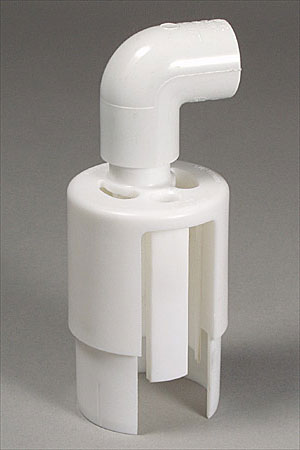It does not need to be tested, it's DRAIN WATER. DRAIN WATER by definition is NONPOTABLE. How much clearer does it get than that? Drain water from your kitchen sink is NONPOTABLE, you don't need to test it to know that.
Oh but... you added something to the sink water that is not allowed in potable water, like detergent. Fish scales. Raw parts of chickens. Yer dirty hands from plumbin' in a sh$t hole somewheres all yucky all the day long... Some folks wash their kids dirty diapers in the sink, and the BABY!etc..
No such thing in the softener.
And if you claim the salt or brine water is non potable, from your plumber license based info, sodium and chlorides are both tested for in a potability test.
And if we listened to you, the whole softener (or filter) and all water going to fixtures from the softener (or filter) would have to be called/judged/spoken of/regarded as or code interpreted as being "undrinkable" and non potable.
That's due to the salt being flushed out of the "drinking water" in the resin tank and that same water then after going through the resin (or filter mineral) being eventually used by old lades, kids, gentlemen like me, you could say drank/consumed by the family, strange visitors etc. without any disinfection after the regeneration (or backwash of the filter) using the salt and water from the salt tank (filter's chlorine or potassium permanganate regenerant). Which if we listen to dittohead, softened or non softened brine water is just fine sitting around in a salt tank in a garage, basement (dark'n dank'n otherwise nasty) for maybe 3-4 weeks or more before it is used by the softener.
So you are saying that anyone could drink the discharge water from a water softener. The same discharge that has salt and whatever minerals the softener was holding on to before it regenerated?
Well yeah... the minerals were in the potable water before it entered the softener and there is no EPA MCL (Maximum Contaminate Level) set for calcium. magnesium, iron, manganese etc..
As I said above, sodium and chloride is tested also, as is sulfates etc. etc.. There is no enforceable MCL for sodium, chlorides, sulfates, just suggested maximums. Same for TDS (Total Dissolved Solids).
I take it your 4 or more years to get a plumber's license didn't get into the nitty gritty very EPA mandated specific details of potability. All you got was a statement, probably repeated to no end, to call any and all drain water non potable, or was it "undrinkable"?
Final question for you... the water exiting a softener going to the fixtures, it is tested and found to be potable.
In your esteemed position as a codes interpreter, how does the water leaving the control valve going into an NSF certified potable water line material drain line become undrinkable", or actually non potable as it exits that line?
.
The filters drain water is not potable but the valve head it is connected to does have potable water running through it. Are you really that dense? Again, go get a plumbers licence. It will only take you four years or so and then maybe, just maybe you can engage in an intelligent discussion of this issue because as of now, once again you are the only on posting here that apparently has no clue what you are talking about. And BTW, just because you are loosing a discussion is no reason to start insulting folks either. It really does piss you off to no end that I know the code and can interpret the code but that's my job.
LOL, now you're getting emotional again, and again slurring your typing.
Hey, didya see what water solutions said about the subject before he started whining about my lack of "Professionalism" etc.?
Here it is in case you missed it: Non-potable water is not fit for human consumption,
also it is not called drinking water.


